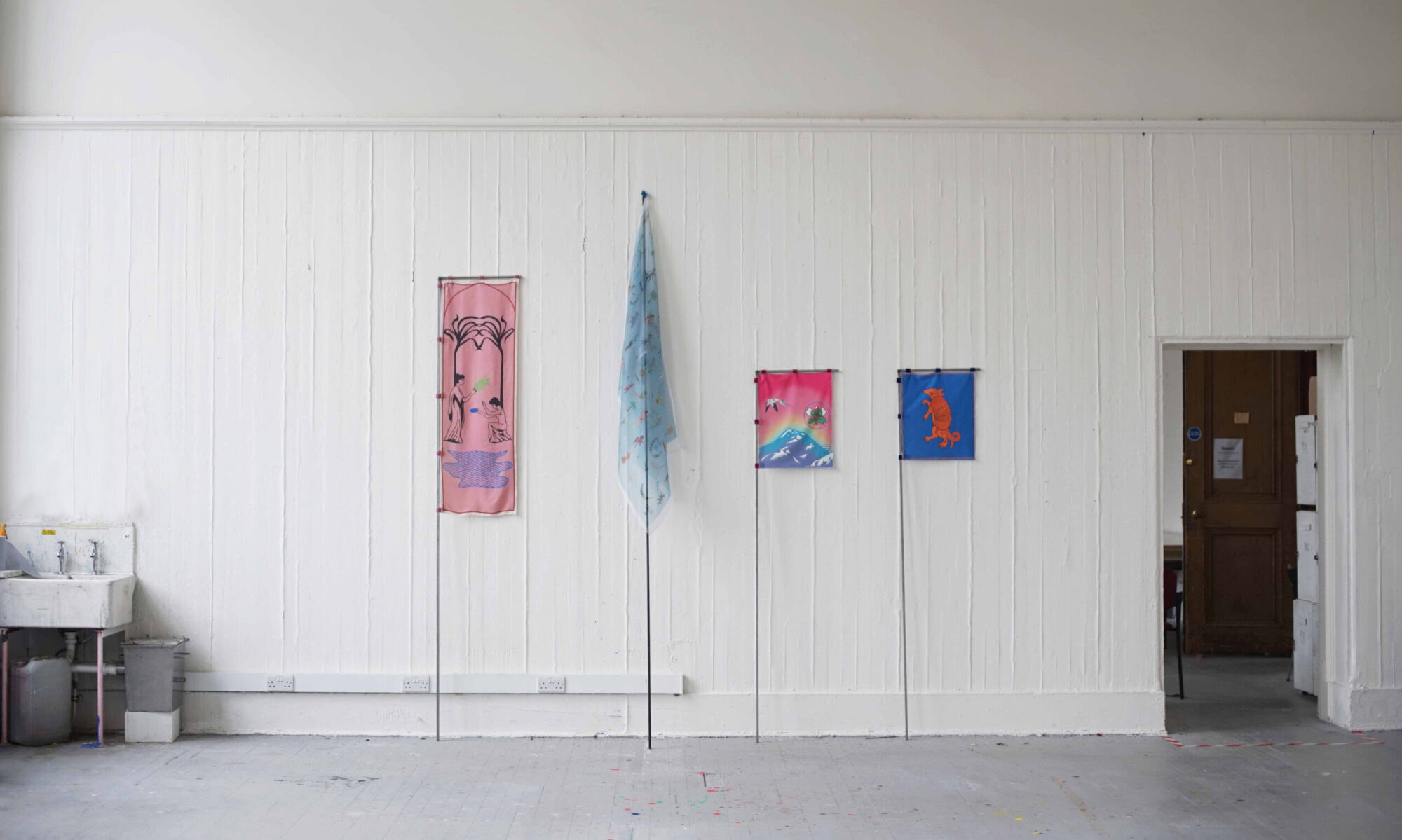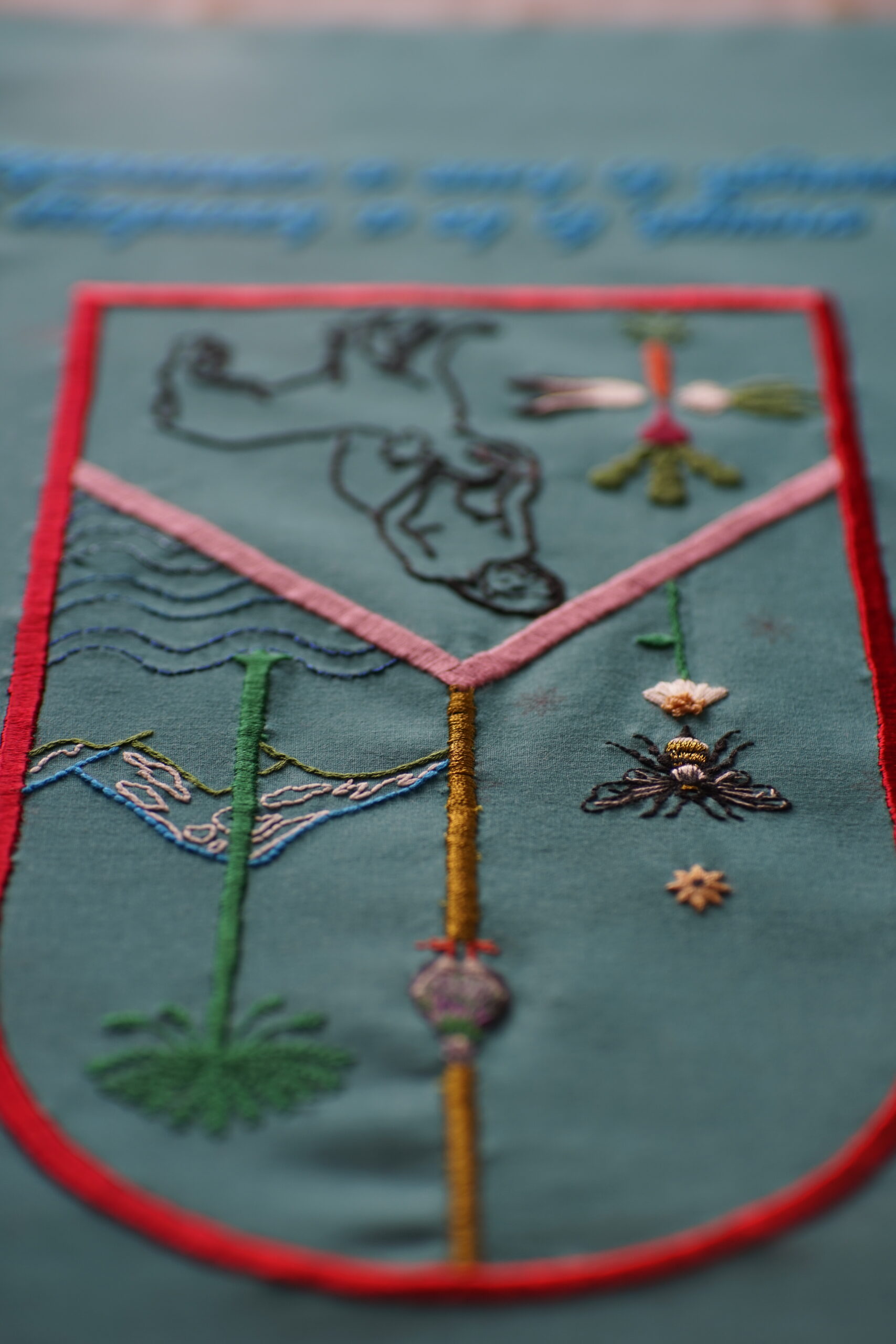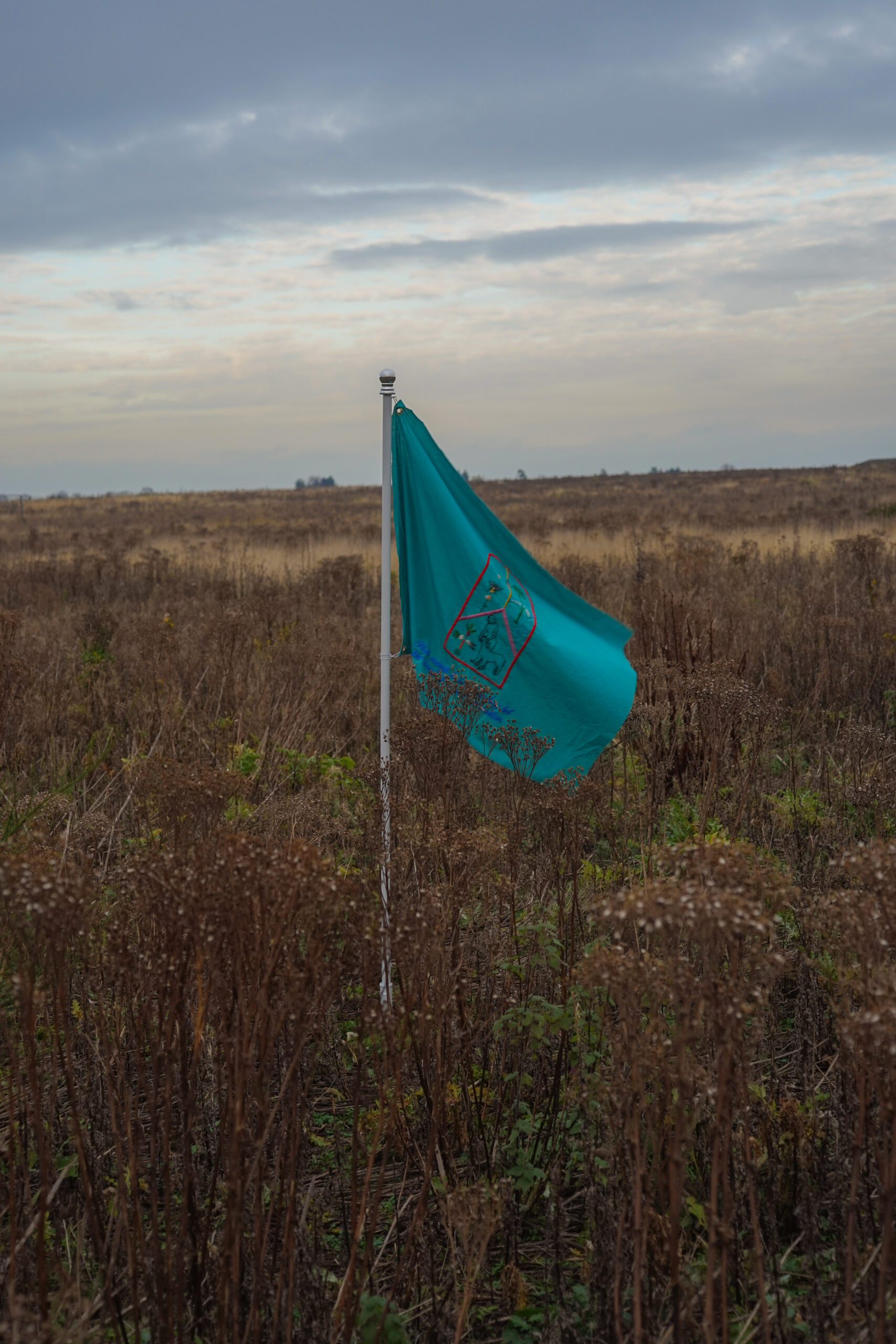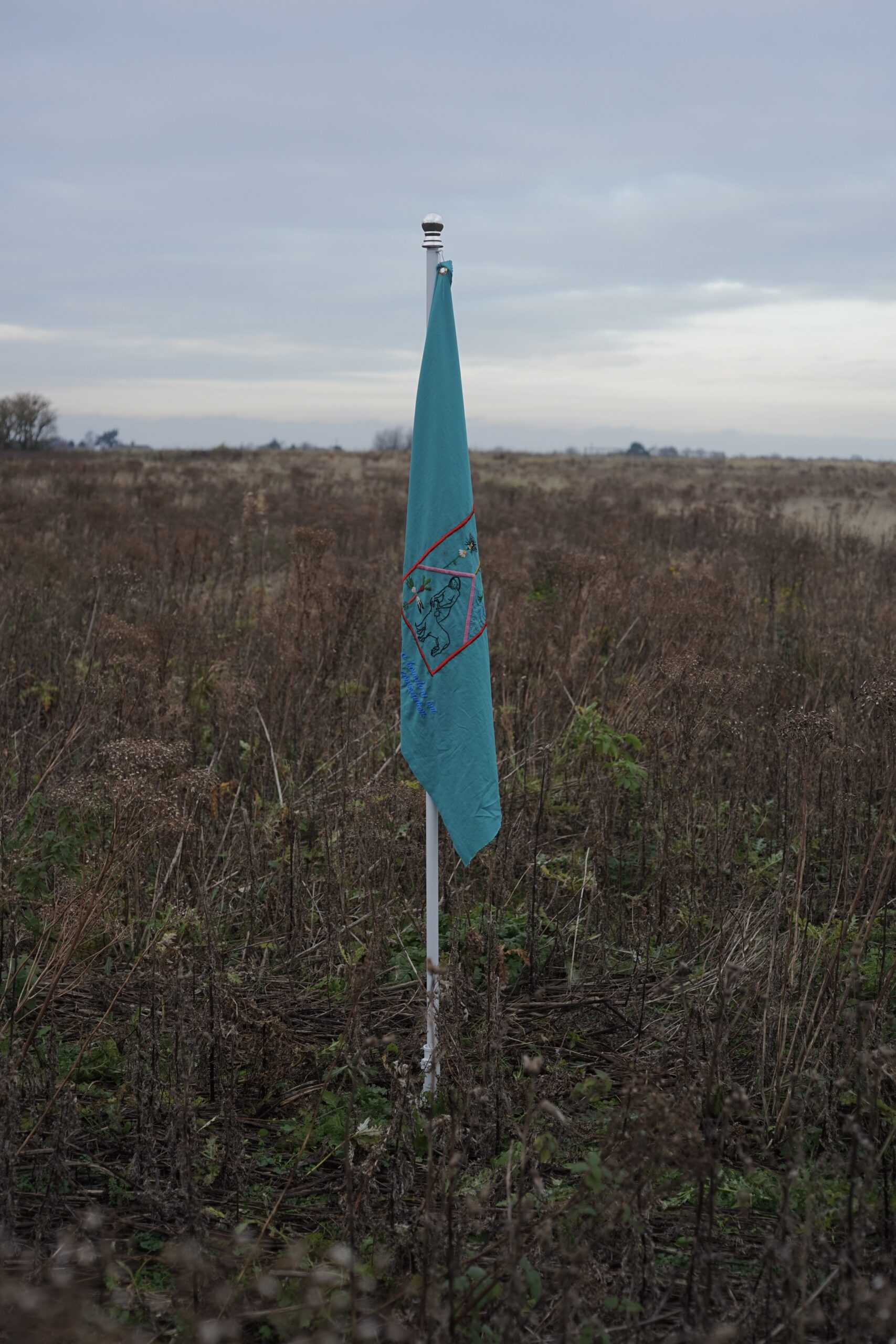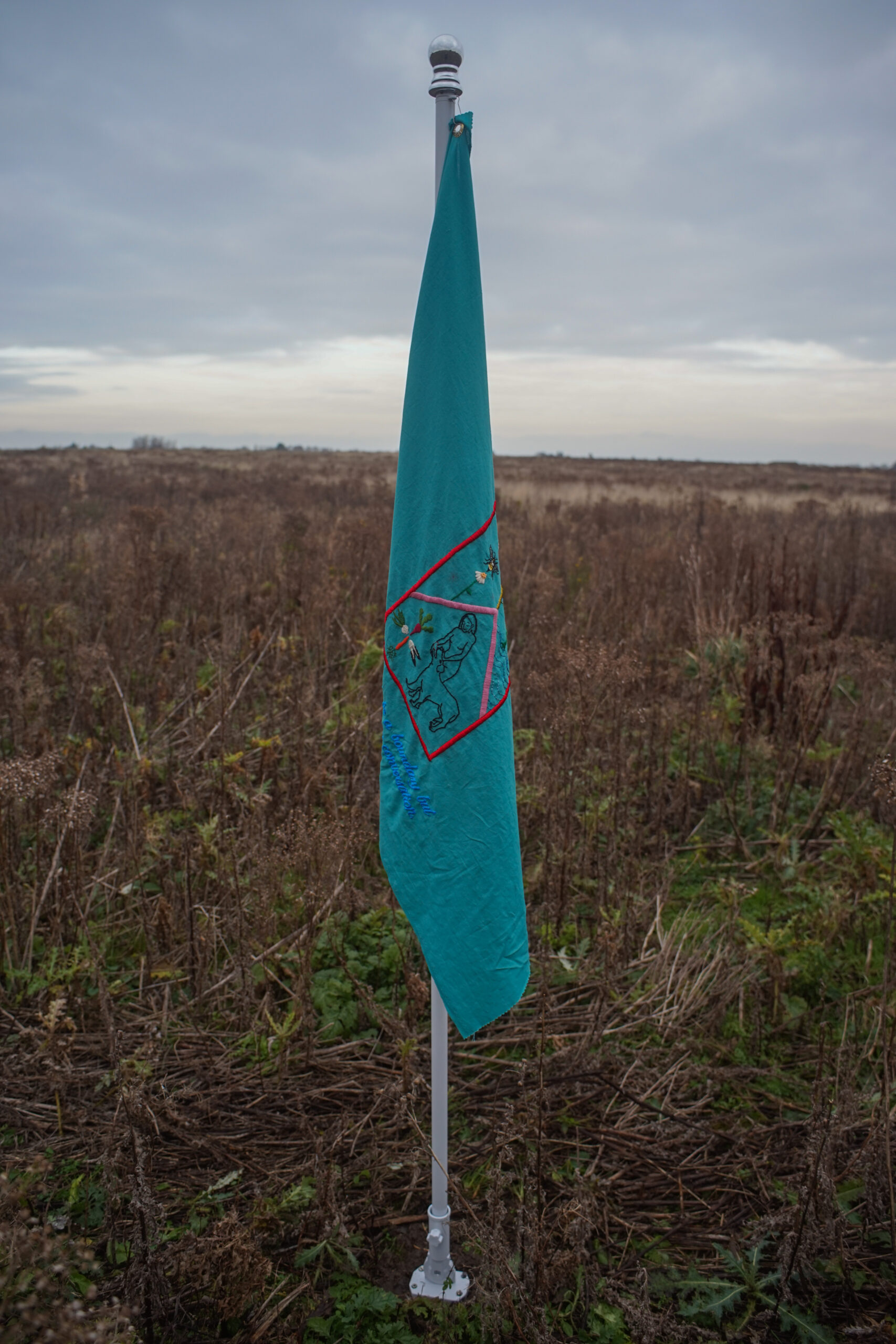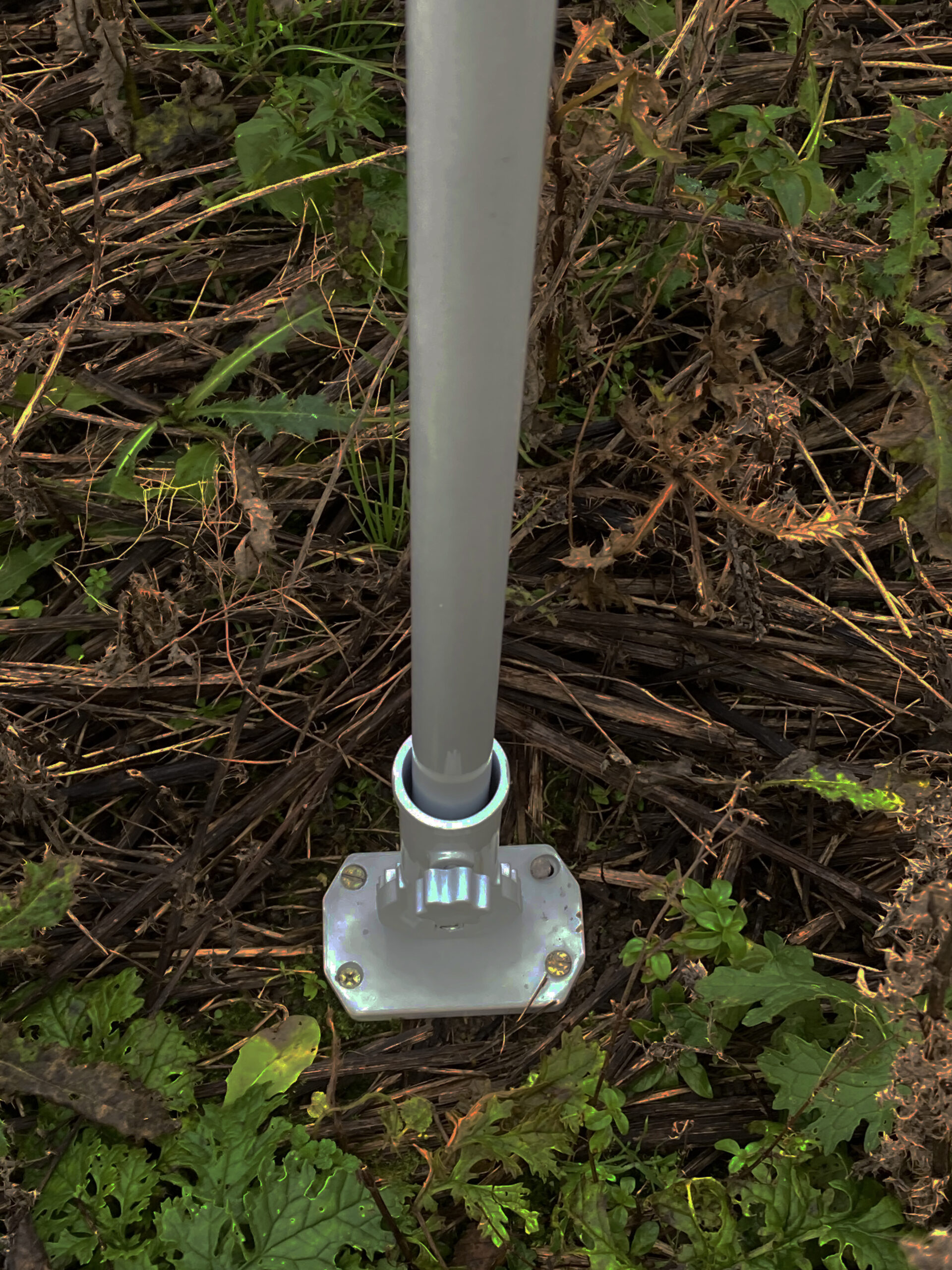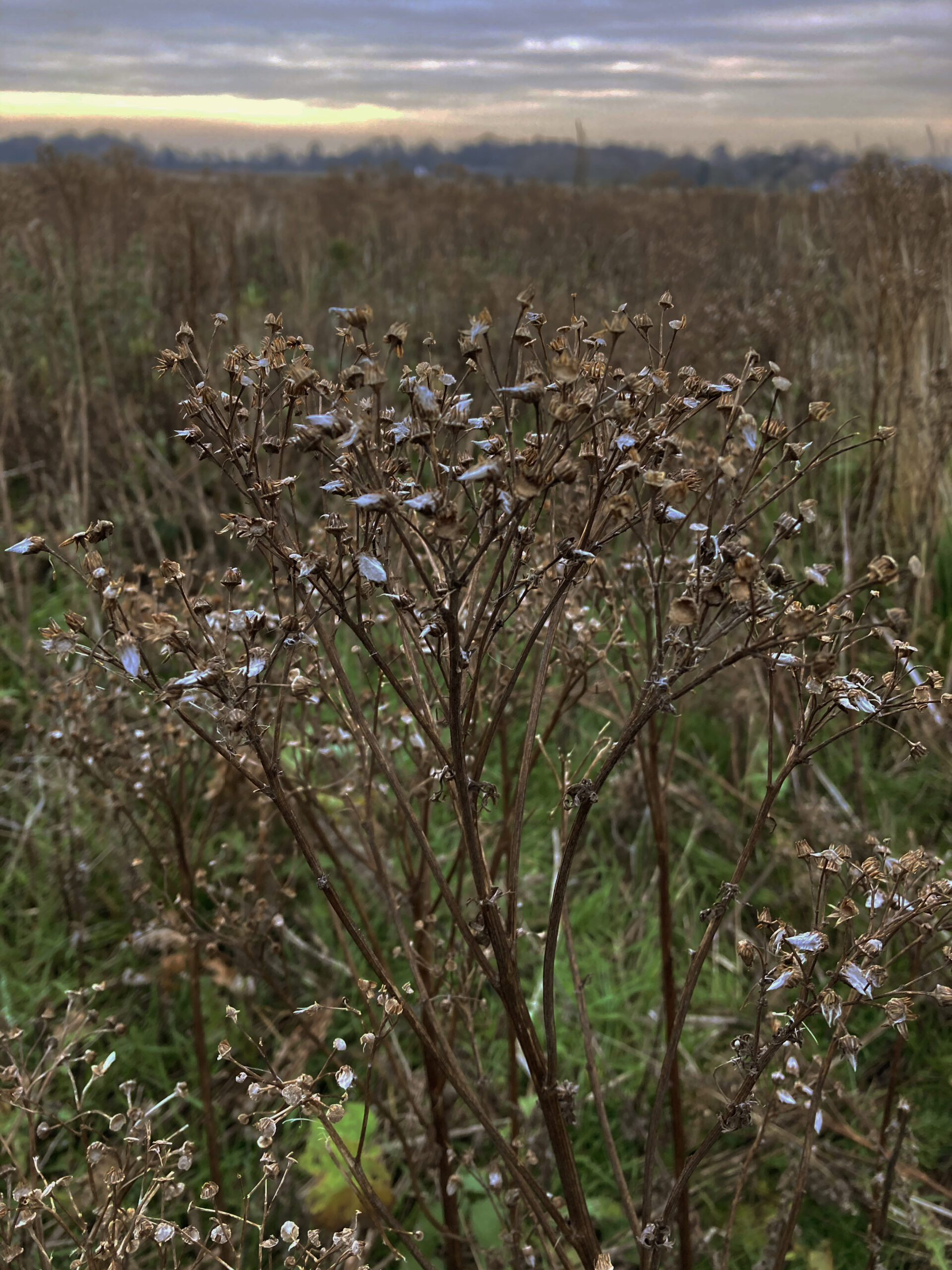Hand embroidered fabric and aluminium flagpole.
190 x 100 cm.
Edinburgh, 2020.
I spent the last eight months out there. Lockdowns were in place all over the world, but I was lucky to be living in a city where going out was always permitted: one hour, one form of exercise a day, the government said. By walking or cycling, I discovered all sort of places: parks, woods, hills, leisure areas, hiking areas, conservation areas, community areas, private and public areas and invisible areas as well. All these different places represent different ways of how people interact with nature and with the non-humans that live there. Thus, I created separate names for each area. There are, for instance, The Epic Places such as the Pentland Hills, a preserved area with magnificent views, all sort of animal encounters, a wide range of plant species and all that a few minutes away from the city centre. During the pandemic summer, you could even be alone there, walking up the hills, is a man vs nature kind of place if you want, an accessible version of that.
There are Dramatic Areas like Arthur’s Seat, great city views, some historical context and that self-realisation felling at the top. But there are more people there, always, and that is good too. There are local people, students, tourists. Dogs are allowed there.
There are also Community Sites, such as allotments: lots of them hidden within the city, what a discovery to me. I see them as small territories, tiny countries of one-man population, each land with its particular architecture and agriculture. I’ve heard that in other countries people fix a flag on their slots. There are communication and trade between those tiny countries, but there are boundaries as well, borders, fences and gates. It is perfect. About that fences, iI found an interesting blog about allotments in Glasgow and the author said that fences between slots should be “high enough to be a boundary but low enough to have a conversation with a neighbour”1. What perfect way to describe the duality between the private and the common, to depict territories, boundaries and all the issues that people experience in both sides of that fence through history.

I took that sentence as a motto, just because it was so good. Now I needed an emblem, symbols to embody that statement. Then, having this brand new own emblem, there is just one step to have your own flag, as big as you want, there is plenty of time.
There is, however, one last type of place, which is not defined by the interaction with humans, but the lack of it. The kind of empty areas that you can pass next to and not even notice them. Because they were not intended for interaction, not yet, or probably they are not there to be explored by people like you, like me, regular people. These areas exist within the grey area between private and public, places that were used once but not anymore. Some of them were used to be land for crops. That kind of sites offers just one specific type of human interaction with nature.
Now, there are just weed growing there. Very tall, strong and diverse wild plants. That kind of vegetation host other diverse species of animals, insects, wild mushrooms and also people who walk through it. This type of site is the one I chose for my flag: the wildness and not the wilderness. Here the boundaries are not clear, but the presence of multi-species is abundant even after years of exploitation by humans. Maybe this kind of places, in the surroundings of most cities, are the ones who deserve more attention. Perhaps these places should be encouraged because they host all types of human interaction with nature, good and bad, and today it is all about comprehending that difference.
THE SITE
Parklands on the edge of Musselburgh in East Lothian, Scotland. (Next to Newhailes State)
1 Communal Gardening and Social Action in Scotland, by Hannah Baxter: http://goodfoodforall.co.uk/communal-gardening-and-social-action-in-scotland
